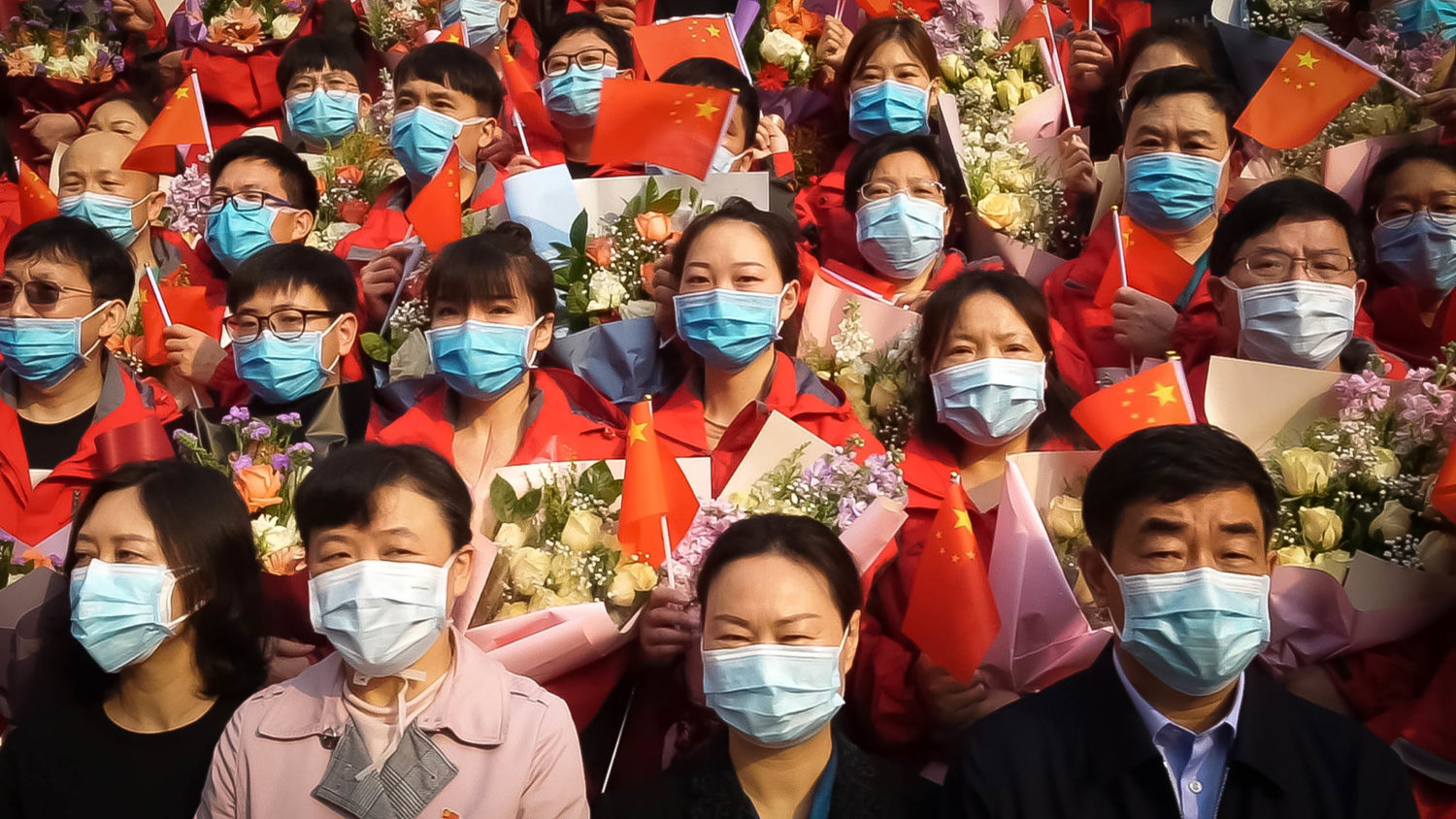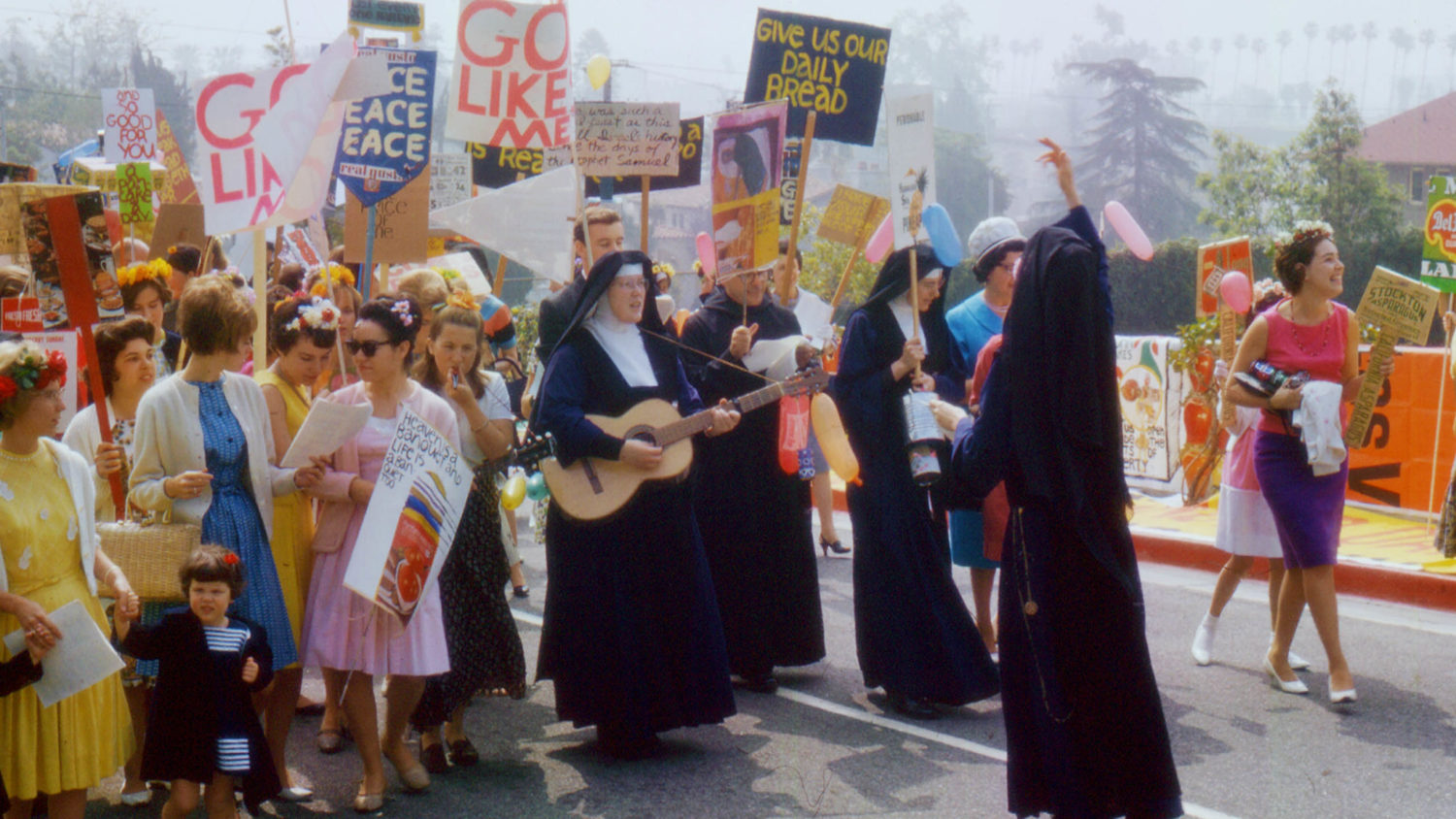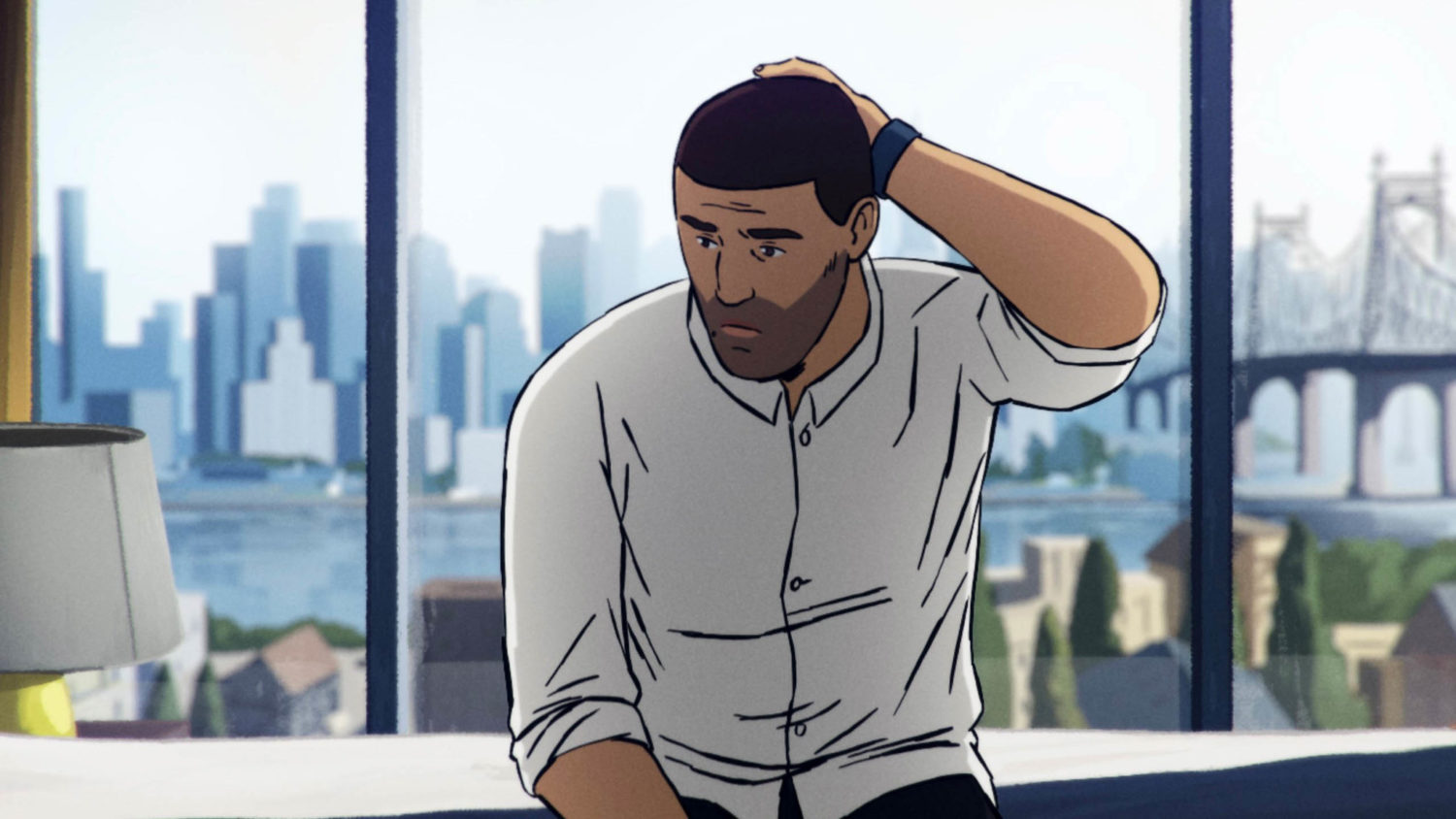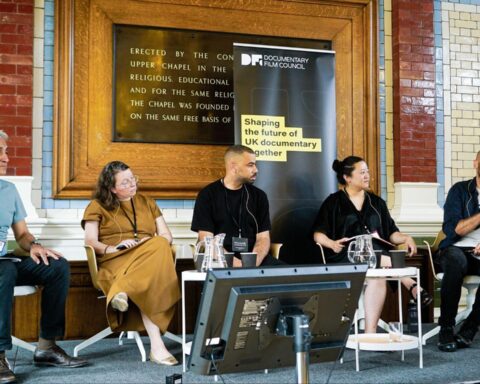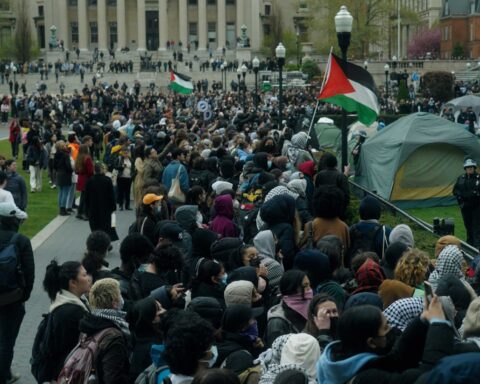In the Same Breath
(USA, 95 min.)
Dir. Nanfu Wang
Programme: Premieres
Is it time to say we’ve hit the second wave of coronavirus documentaries? Nanfu Wang’s In the Same Breath marks a notably different turn from the first batch of COVID docs out of the gate last fall. Films like 76 Days, Totally Under Control, and The Curve landed as audiences were only beginning to make sense of the pandemic that altered their lives. These films ring with palpable urgency, and capturing a war as it unfolds is no easy feat. However, the first wave of COVID docs are inevitably limited despite the immediacy of their images. There’s only so much one can say about a story without an end.
The story of COVID-19 obviously does not yet have an ending, but In the Same Breath is a gut-punch of a documentary that benefits from the longer gestation period. This work will stand as one of the greater documents of these life-altering times. Wang explains in the film’s opening voiceover that she left her son and husband in China to return to the USA on a work trip, arriving on January 23, the day that Wuhan went into lockdown. Fortuitously, that trip was actually jury duty at the Sundance Film Festival where Wang and others took up their responsibility as documentary filmmakers to tackle the event as it unfolded. In the Same Breath makes sense of the year between one Sundance festival and the next, and considers what comes after COVID.
Wang reflects on the Chinese government’s messaging and misinformation campaigns that inspired her to leave China assuming all was well. Rewind to the New Year’s celebrations of 2020, and one would hardly have a sense of the year to come. She shares news that aired one day after President Xi Jinping regaled the nation with a message of health and solidarity: an ominous bulletin about eight people who were arrested for spreading rumours about a case of pneumonia. Wang repeats this line frequently throughout In the Same Breath. “Eight people were arrested for spreading rumours about a rare case of pneumonia.” News clips reveal anchors from different broadcasts and outlet reading the same words verbatim. Wang recognizes that the government rang in the New Year with propaganda and lies, rather than risk embarrassment by acknowledging an unfolding disaster.
Directing remotely from China and amassing a crew of videographers who brought cameras to the front lines of Wuhan, Wang captures the chaos that erupted while Chinese officials congratulated themselves. In the Same Breath features striking and emotionally urgent footage from the ICUs of hospitals in Wuhan that measure up to the harrowing images from this fall’s 76 Days. The film offers more sights of doctors and nurses scrambling to treat patients. There are more images of families devastated by loss as they arrive at hospitals that are at capacity even though the government says all is well.
Where 76 Days generally maintains its focus on a team of doctors, nurses, and patients in a hospital, In the Same Breath roams the streets of Wuhan to observe the lockdown in action. In one clip, Wang introduces an excerpt from a fifteen-minute long-take shot by one of her cinematographers. It follows an emergency response team navigating the circuitous streets on foot to attend to a patient. The barricades make an approach via ambulance impossible. This ominous shot inspires Wang to wonder about all the souls lost behind the darkened windowpanes of Wuhan.
The film draws upon the social media responses of people in China searching desperately for answers. These citizens are mostly people infected with the virus or family members of those who contracted it. They risk censorship and punishment for merely asking questions. Posts disappear, as do people. Journalists vanish as quickly as they can publish stories. When Wang enquires about several of the parties who posted about the situation, she learns of their shared fate: they’re all dead.
In the Same Breath digs further into what happened in the early days of the pandemic by drawing upon interviews with the family members of survivors, as well as testimony from frontline workers. The latter prove especially compelling as Wang observes the evidence of PTSD in her interviewees. The nurses, doctors, and frontline workers simply break down into tears randomly during interviews. The emotional burden and exhaustion is palpable. She sees a human toll to the coronavirus pandemic that no government is willing to acknowledge.
The film asks what happens when a government is willing to fail its people so brazenly and senselessly. As with her bravura feat of filmmaking One Child Nation, Wang interrogates the power of propaganda and a nation’s willingness to be deceived. (If there’s a fault to In the Same Breath, though, it’s that she inevitably can’t capture the full personal and collective reckoning of this period because it’s only just begun.) She doesn’t limit the scope to China, though. The film’s shift in focus from China to the USA admittedly strikes a stark late-act tonal shift that proves mildly disorienting, but the pivot is necessary. China’s disastrous mishandling of the pandemic was merely an opening act for Donald Trump’s full-blown catastrophe.
Wang, after all, looks at the situation from within a nation that, like China, downplayed the severity of the pandemic to save face and maintain the status quo. Wang’s dual perspective as a citizen of both China and the USA lends a uniquely personal and geopolitical analysis to the situation. She observes the world’s two most powerful nations engulfed with propagandistic messaging and ruled by authoritarianism. However, having been born in China during the years of the One-Child policy, Wang understands where the Chinese people’s willingness to believe their government comes from. One is surrounded by propaganda from birth. In the USA, however, the messages focus not on collective strength, but on individual freedom. The film is ultimately about a new pandemic of authoritarian rule in which citizens in the land of the free aren’t truly free.
In the Same Breath even has its own markings of a “COVID cut” with footage included from January 2021 (weeks after the film was announced for Sundance) to show the people of Wuhan congregating in the streets. They’re rejoicing in their shared strength just as they were in the first days of 2020. People will seemingly believe anything to preserve a sense of normalcy. In the Same Breath takes the growing field of COVID docs a step further with this penetrating analysis. The digging is a little deeper, and the arguments are more considered and nuanced. It uses the benefit of time to consider the implications of the virus as the death toll rises and citizens become divided between those fighting to safeguard health and those fighting for their rights as consumers. In the Same Breath doesn’t have answers since it’s still too early to draw conclusions, but Wang anticipates a greater plague to come.
In the Same Breath premiered at the 2021 Sundance Film Festival. and has its Canadian premiere at Hot Docs.




